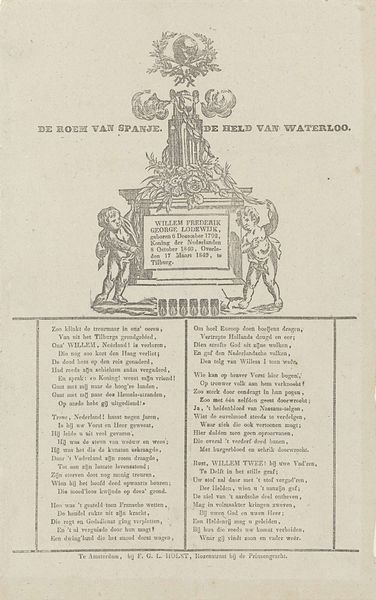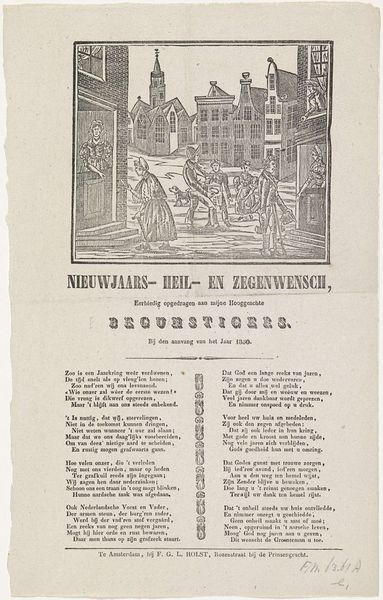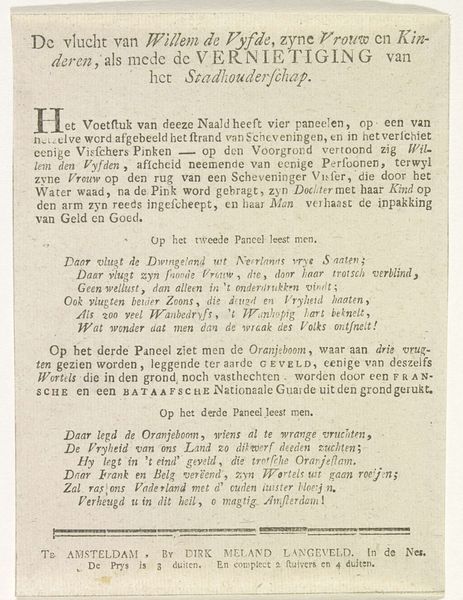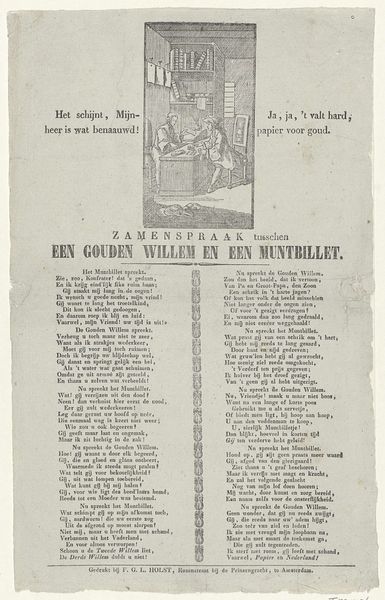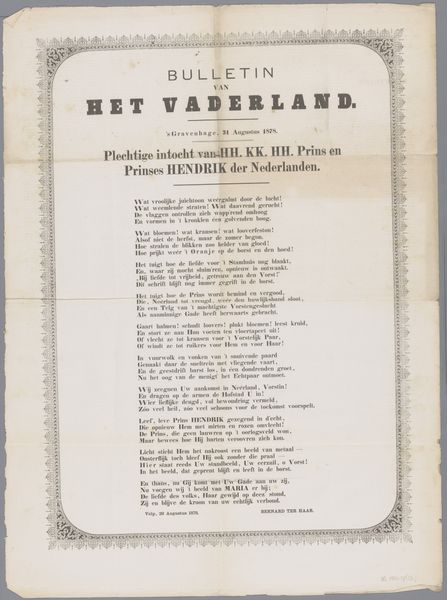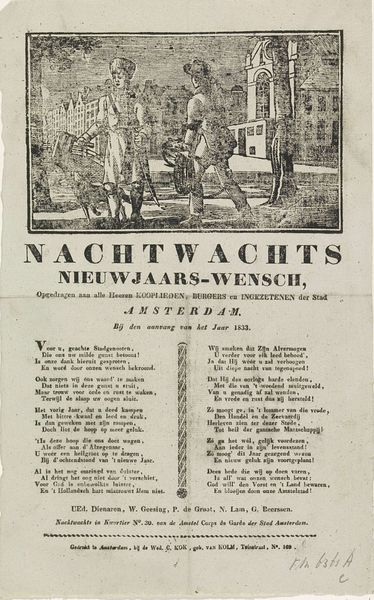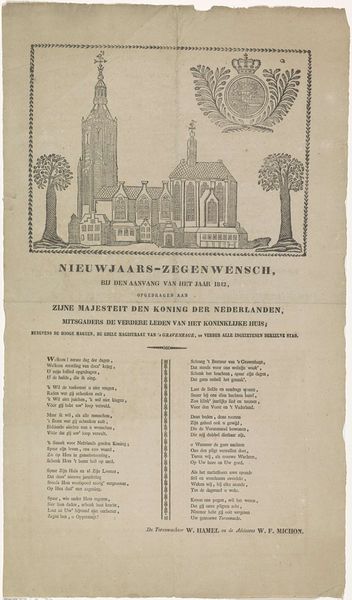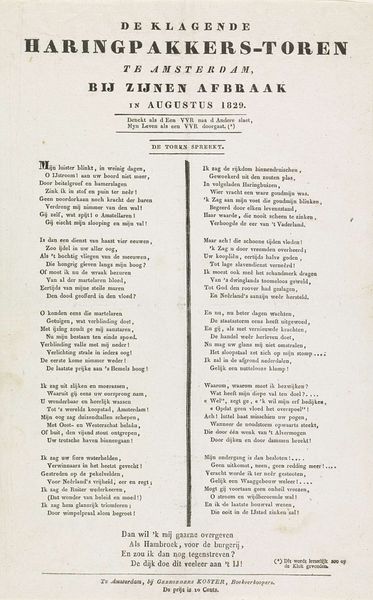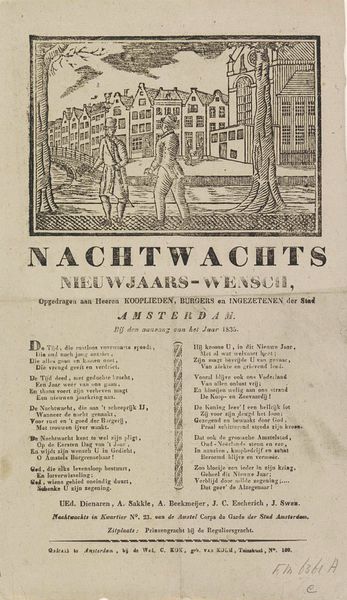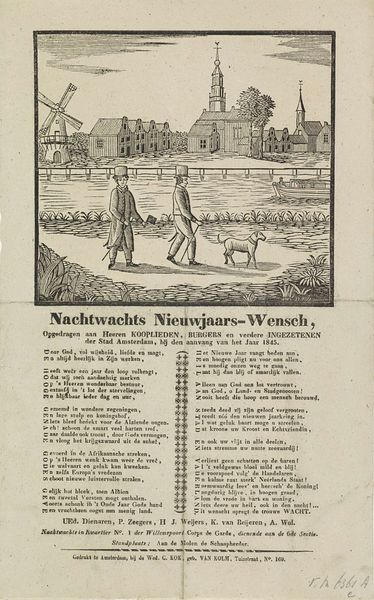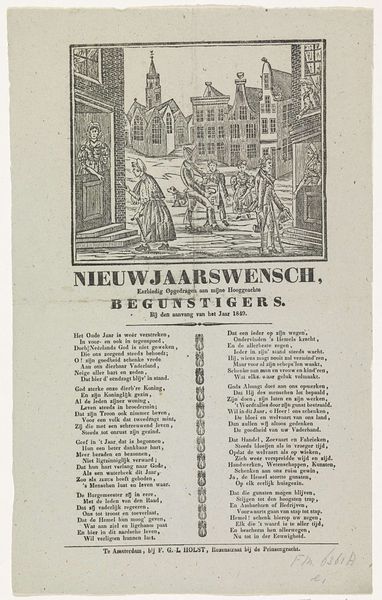
Nieuwjaarswens van de nachtwacht van Haarlem voor het jaar 1849 1848 - 1849
0:00
0:00
graphic-art, lithograph, print
#
portrait
#
script typeface
#
graphic-art
#
script typography
#
narrative-art
#
lithograph
# print
#
old engraving style
#
hand drawn type
#
hand lettering
#
hand-drawn typeface
#
fading type
#
thick font
#
genre-painting
#
handwritten font
#
historical font
#
calligraphy
Dimensions: height 335 mm, width 216 mm
Copyright: Rijks Museum: Open Domain
This anonymous print, made in Haarlem in 1849, presents a New Year's song by the night watch, capturing a moment freighted with symbolism. The watchmen themselves are a dominant motif. As guardians of the night, they embody vigilance and order. Yet, beyond their immediate function, they resonate with ancient archetypes. Think of Janus, the Roman god of doorways and beginnings, often depicted with two faces, looking simultaneously to the past and the future. The night watch stand at a temporal threshold, mirroring Janus’s gaze across time. Their presence calls to mind similar figures in other contexts, such as the watchmen in Rembrandt’s “The Night Watch” who, despite their civic duty, invoke a deeper, almost mythical sense of collective responsibility. Such symbolism speaks to our deep, subconscious need for protection and guidance during uncertain times. As history cycles, the watchman reappears. He is the constant guardian, a figure both historical and timeless, reminding us of the cyclical nature of human experience.
Comments
No comments
Be the first to comment and join the conversation on the ultimate creative platform.
